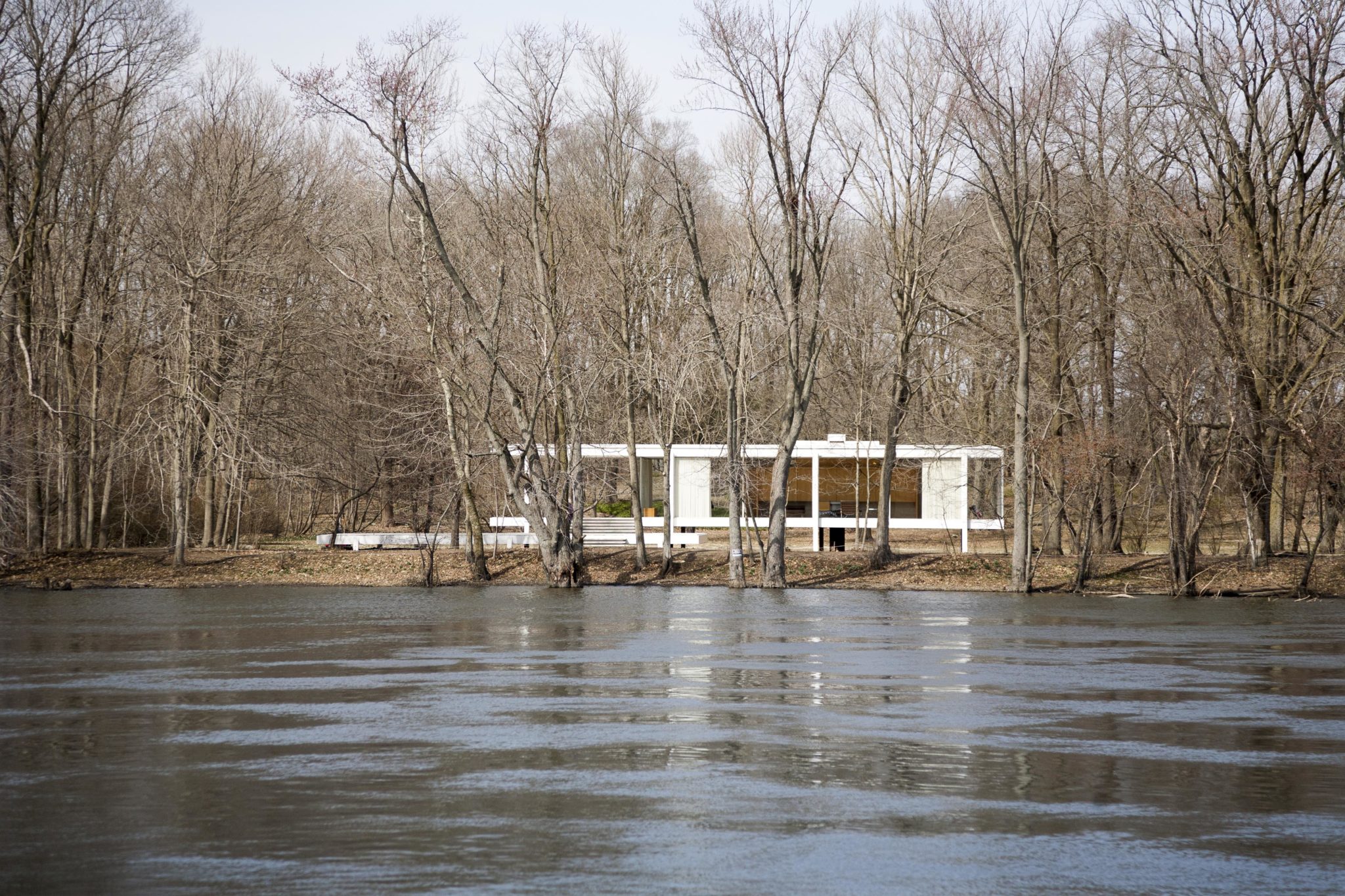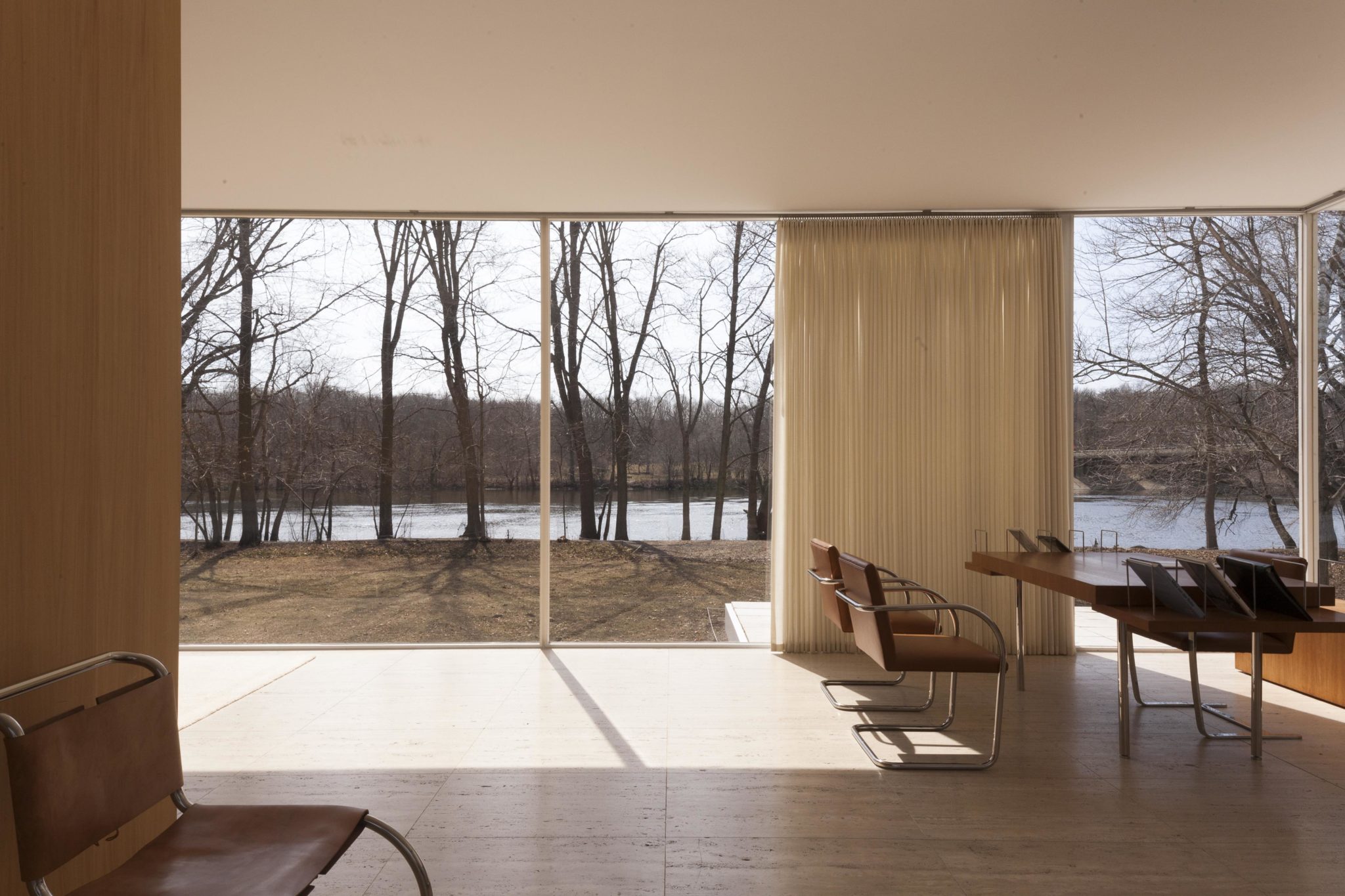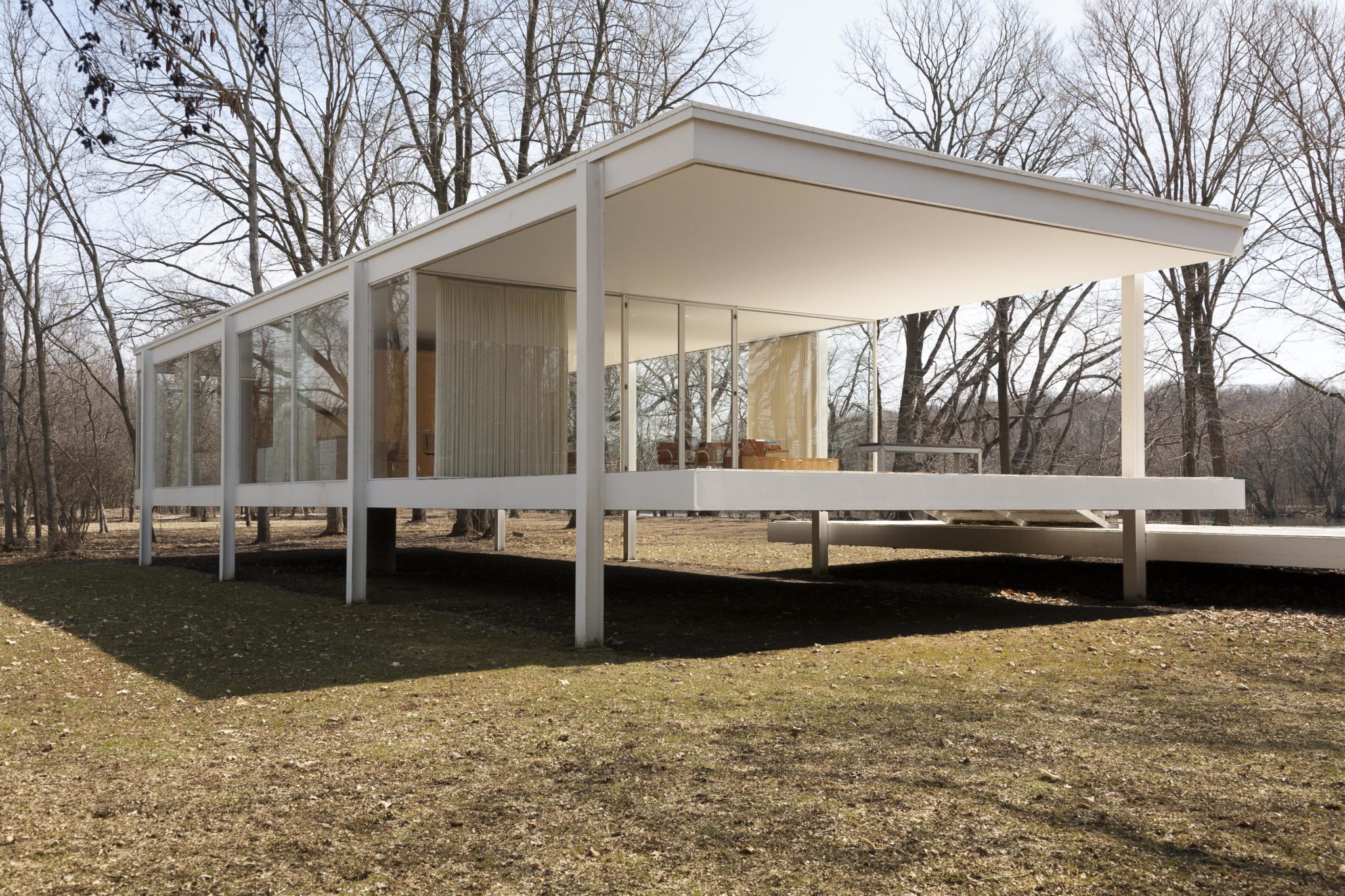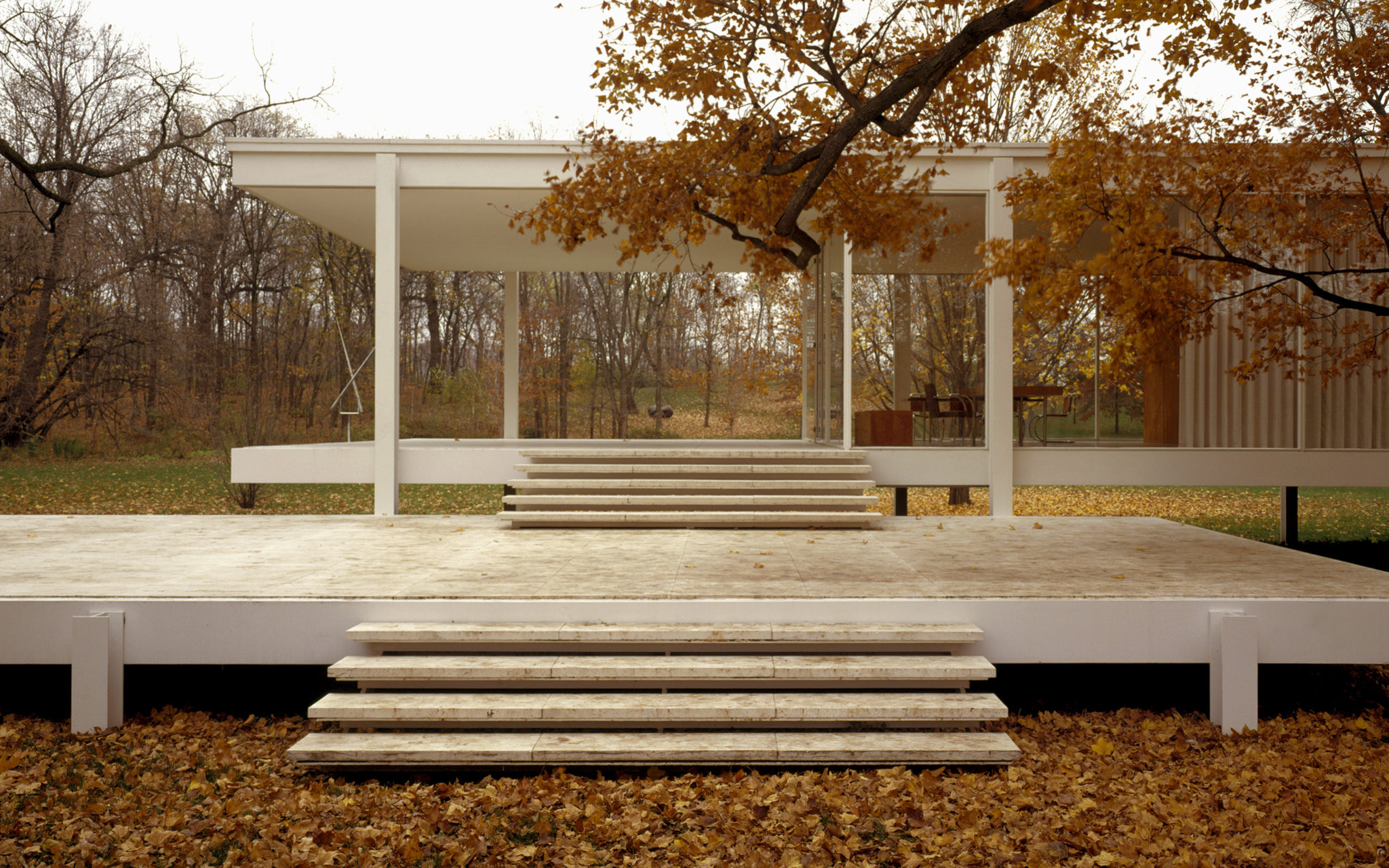Historic Significance
The iconic white steel-and-glass house, which was completed in 1951, is located on the banks of the Fox River, 60 miles southwest of Chicago. An example par excellence of the International Style of architecture, Ludwig Mies van der Rohe’s famous glass box residence juxtaposes sleek Modern with the surrounding nature. The architectural significance of the home has long been recognized—even before its completion, when a model of the Farnworth House was exhibited at the Museum of Modern Art in New York. The Farnsworth House is one of the most significant of Mies’ works and is one of only three houses he designed in the United States. The house was originally built as a one-room weekend retreat on a 60-acre wooded estate along the river for Edith Farnsworth, a successful Chicago physician and researcher. In 1972, Farnsworth sold the home to Peter Palumbo, a British arts patron who had restored several other historic properties.
Since its completion in 1951, the Farnsworth House has been meticulously maintained and restored several times. The most important restoration took place in 1972, when then owner Palumbo hired the firm of Mies van der Rohe’s grandson, Dirk Lohan, to restore the house to its original 1951 appearance. A second restoration by Palumbo took place in 1996, after a devastating flood damaged the interior. Although the house was built to resist floods in 1951, development in the surrounding area has caused higher flood levels in recent decades.
(Credit: Liz Chilsen)




